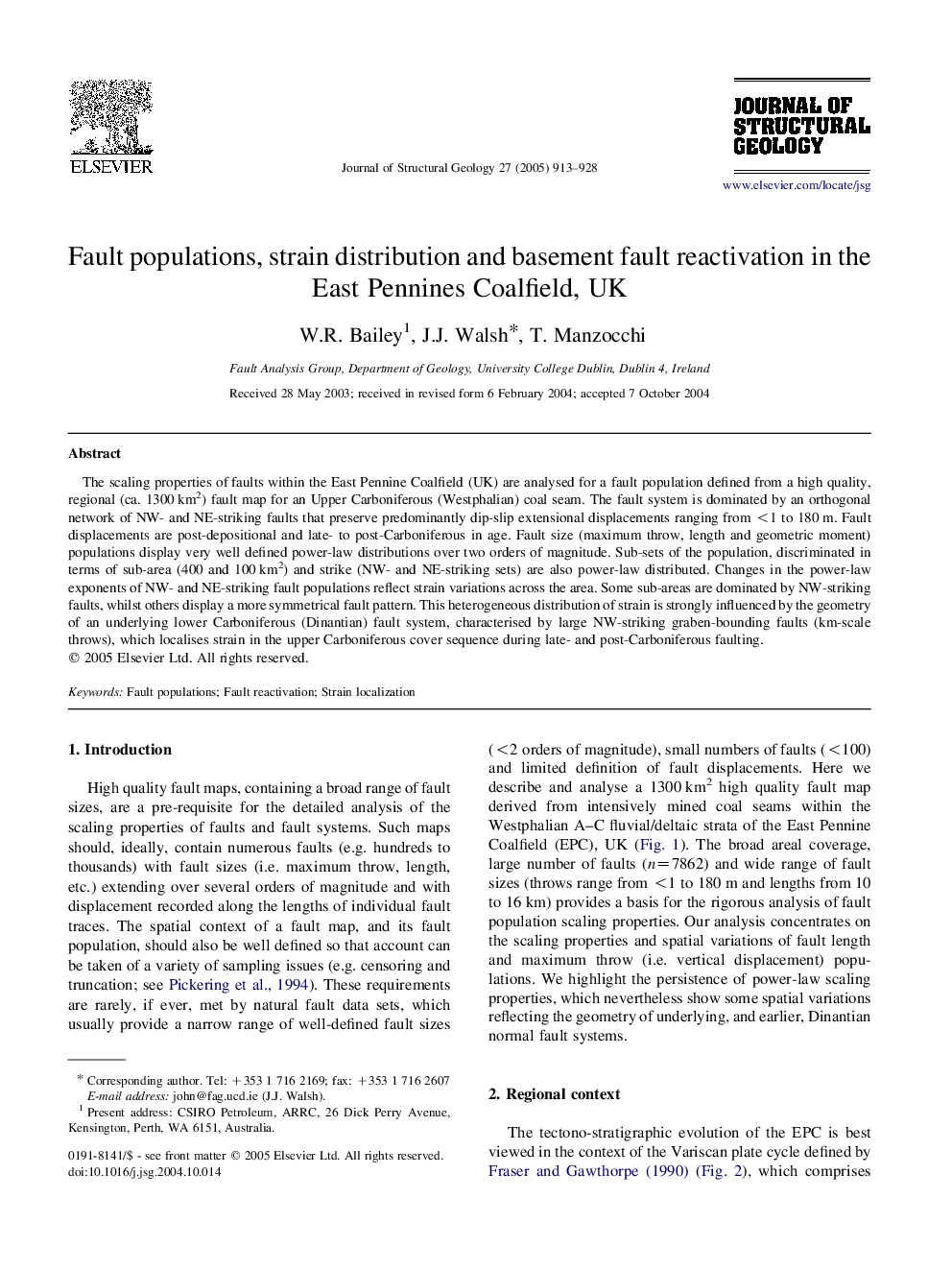| Article ID | Journal | Published Year | Pages | File Type |
|---|---|---|---|---|
| 9536138 | Journal of Structural Geology | 2005 | 16 Pages |
Abstract
The scaling properties of faults within the East Pennine Coalfield (UK) are analysed for a fault population defined from a high quality, regional (ca. 1300Â km2) fault map for an Upper Carboniferous (Westphalian) coal seam. The fault system is dominated by an orthogonal network of NW- and NE-striking faults that preserve predominantly dip-slip extensional displacements ranging from <1 to 180Â m. Fault displacements are post-depositional and late- to post-Carboniferous in age. Fault size (maximum throw, length and geometric moment) populations display very well defined power-law distributions over two orders of magnitude. Sub-sets of the population, discriminated in terms of sub-area (400 and 100Â km2) and strike (NW- and NE-striking sets) are also power-law distributed. Changes in the power-law exponents of NW- and NE-striking fault populations reflect strain variations across the area. Some sub-areas are dominated by NW-striking faults, whilst others display a more symmetrical fault pattern. This heterogeneous distribution of strain is strongly influenced by the geometry of an underlying lower Carboniferous (Dinantian) fault system, characterised by large NW-striking graben-bounding faults (km-scale throws), which localises strain in the upper Carboniferous cover sequence during late- and post-Carboniferous faulting.
Related Topics
Physical Sciences and Engineering
Earth and Planetary Sciences
Geology
Authors
W.R. Bailey, J.J. Walsh, T. Manzocchi,
